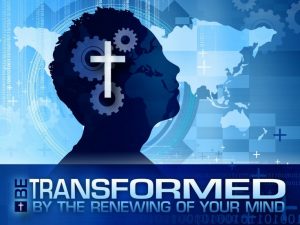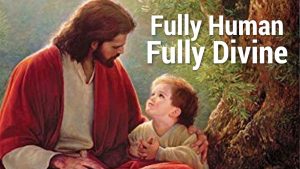
Shownotes
Welcome to Day 1501 of our Wisdom-Trek, and thank you for joining me.
I am Guthrie Chamberlain, Your Guide to Wisdom
A Family of Imagers – Worldview Wednesday
Wisdom - the final frontier to true knowledge. Welcome to Wisdom-Trek! Where our mission is to create a legacy of wisdom, to seek out discernment and insights, to boldly grow where few have chosen to grow before. Hello, my friend; I am Guthrie Chamberlain, your captain on our journey to increase Wisdom and Create a Living Legacy. Thank you for joining us today as we explore wisdom on our 2nd millennium of podcasts. Today is Day 1501 of our Trek, and it is Worldview Wednesday. Creating a Biblical Worldview is essential to have a proper perspective on today’s current events. To establish a Biblical Worldview, you must have a proper understanding of God and His Word. This week, on our Worldview Wednesday episode, we will continue our study based on a course I recently completed taught by Dr. Michael Heiser. Our study is titled “Sons and Daughters of God: The Believer’s Identity, Calling, and Destiny” Throughout this multi-week course, we will demonstrate that, in the Old Testament, “sons of God” and “holy ones” refers to supernatural beings whose Father is God and who work with God to carry out His will and that this divine family was present before humanity. By fully engaging with biblical texts such as Psalm 82; Psalm 89, and Deuteronomy 32:8–9, our study will show that this divine family functions as a template for God’s human family. God desires of humans, as His imagers, to participate in His council. This study addresses issues such as polytheism, the nature of the (little ‘g’) “gods,” and Yahweh’s uniqueness. This study will apply insights to the New Testament texts and show how the metaphor of being in God’s family informs our sense of identity and mission as believers.
A Family of Imagers
· Segment 28: Believers as Family, Participants - 1
Introduction
There are several statements about Jesus in the New Testament. There are also several references about us as His sibling, because of the incarnation. These references build on the family language of the Old Testament “sons of God,” the divine family idea, specifically as it relates to representing God, that is to say, imaging God.
Christ as “Image of God” Intentionally Links to Genesis
For instance, in 2 Corinthians 4:4, we read that “Satan, who is the god of this world, has blinded the minds of those who don’t believe. They are unable to see the glorious light of the Good News. They don’t understand this message about the glory of Christ, who is the exact likeness of God.” Now, we know from the Old Testament that we are spoken of in the same language. If you were a person reading this or hearing this from Paul or the mouth of some other apostle, you would immediately think back to the concept (that scene in Genesis 1) where humanity is created in God’s image or, as we’ve suggested, as God’s imager.
Here, you have Christ called “the image of God.” He is, think about it, the ultimate human. He becomes man. He is incarnate as a human being, and He is here to do many things, but one of them is to show us what God is like—to be God in the Father’s stead, as it were. Of course, Jesus alludes to this several times in His own ministry, but this language, again, is intentional. As we fix our minds on the fact that Jesus is the ultimate imager, the ultimate example of this, the ultimate template, when the language shifts to believers, that’s going to make sense; it’s going to take our minds back to Genesis and help us to process these things because they have a long history that goes all the way back to the beginning.
Conforming to Christ
In Colossians 1:15, it says, “Christ is the visible image of the invisible God.
He existed before anything was created and is supreme over all creation,” Now, that has a visible element because as John says in John 1, “The Word [who was God] became flesh.” So we have a visible representation, but the idea of just general representation—being God, in this place and time—is also part of that package.
Romans 8:29, believers know, “For God knew his people in advance, and he chose them to become like his Son, so that his Son would be the firstborn among many brothers and sisters.” Here, we have two aspects: we have the Son of God, the ultimate imager, and we are to be conformed to Him. What does that mean? It means we are to represent God the way Jesus represented God. The way He played the role of imager is how we are to play the role of imager. We were created to be His imager. We were made to represent God, which means to work with Him, carrying out His will in this place that He has put us: earth, the terrestrial realm.
What does that mean? It means we are to represent God the way Jesus represented God. The way He played the role of imager is how we are to play the role of imager. We were created to be His imager. We were made to represent God, which means to work with Him, carrying out His will in this place that He has put us: earth, the terrestrial realm.
Jesus is the example that’s going to be the template not just for a few individuals, but for many people—anyone who believes. He is the example. He was brought here to bring us into the family through redemption that makes us siblings with Him and be our example on how we are to carry out the original mandate of Eden to be God’s representation.
Sanctification Linked to Imaging
In 2 Corinthians 3:17-18, we read this, “For the Lord is the Spirit, and wherever the Spirit of the Lord is, there is freedom. So all of us who have had that veil removed can see and reflect the glory of the Lord. And the Lord—who is the Spirit—makes us more and more like him as we are changed into his glorious image.” This links our sanctification—that whole process of becoming more like Christ—to the imaging idea. Ultimately, we can see how these things dovetail. We are more like Christ—that is the fulfillment of God’s original plan, what He wanted for humanity back into Genesis 1.
Essentially Divine Beings
In 1 Corinthians 15:49, Paul says, “Just as we are now like the earthly man, we will someday be like the heavenly man.” This refers to being divine beings because our spirit, the immaterial part of us, is not terrestrial. We are divine beings. We receive a body in this embodied world to represent God, but ultimately, we will get a new body, and that body will be like the one that Christ had after the resurrection. And Paul spends a lot of time in 1 Corinthians 15 talking about that.
So this is our destiny: to be essentially made like Him. Like 1 John 3:2 says, “We will be like him,” and that includes this glorified body, this glorified existence. That is part of our destiny. That was Eden’s original goal: to take the embodied human beings God has made and somehow graft them into a divine family, unite them into a blended family. It’s been a long time getting there, and of course, we are in this ‘already/not yet’ kind of situation now. Paul and these other writers are borrowing from, really dipping into, the language of the Old Testament. Colossians 3:9-10, “Don’t lie to each other, for you have stripped off your old sinful nature and all its wicked deeds. Put on your new nature, and be renewed as you learn to know your Creator and become like him.” This verse is just another reference to the idea of representing God, becoming progressively less unlike Him and more like Him through the process of sanctification. Ultimately, that is completed when we are made as divine as we can be; we are made like Jesus. It’s not the idea that we’re going to become little Yahwehs, but we will become as close to Him as we can be. We’re still derivative; we’re still contingent; we’re still lesser because of our original creation. As we become more like Christ—Christ, who is the God of Israel, Yahweh incarnate—we can bear a similarity just like a family relationship. Like natural offspring, we will bear that similarity to the ultimate extent at our glorification.[1]
Ultimately, that is completed when we are made as divine as we can be; we are made like Jesus. It’s not the idea that we’re going to become little Yahwehs, but we will become as close to Him as we can be. We’re still derivative; we’re still contingent; we’re still lesser because of our original creation. As we become more like Christ—Christ, who is the God of Israel, Yahweh incarnate—we can bear a similarity just like a family relationship. Like natural offspring, we will bear that similarity to the ultimate extent at our glorification.[1]
That will finish our study for this week’s Worldview Wednesday. Next week we will cover part 2 of “Believers as Family, Participants.” Tomorrow we will enjoy our 3-minute Humor nugget that will provide you with a bit of cheer, which will help you to lighten up and live a rich and satisfying life. So encourage your friends and family to join us and then come along with us tomorrow for another day of ‘Wisdom-Trek, Creating a Legacy.’ If you would like to listen to any of our past 1500 treks or read the Wisdom Journal, they are available at Wisdom-Trek.com. I encourage you to subscribe to Wisdom-Trek on your favorite podcast player so that each day’s trek will be downloaded automatically.
If you would like to listen to any of our past 1500 treks or read the Wisdom Journal, they are available at Wisdom-Trek.com. I encourage you to subscribe to Wisdom-Trek on your favorite podcast player so that each day’s trek will be downloaded automatically.
Thank you so much for allowing me to be your guide, mentor, and, most of all, your friend as I serve you in through this Wisdom-Trek podcast and journal.
As we take this Trek together, let us always:
- Live Abundantly (Fully)
- Love Unconditionally
- Listen Intentionally
- Learn Continuously
- Lend to others Generously
- Lead with Integrity
- Leave a Living Legacy Each Day
I am Guthrie Chamberlain….reminding you to ’Keep Moving Forward,’ ‘Enjoy your Journey,’ and ‘Create a Great Day…Everyday’! See you Tomorrow!
[1] Heiser, M. S. (2019). Sons and Daughters of God: The Believer’s Identity, Calling, and Destiny. Bellingham, WA: Lexham Press.